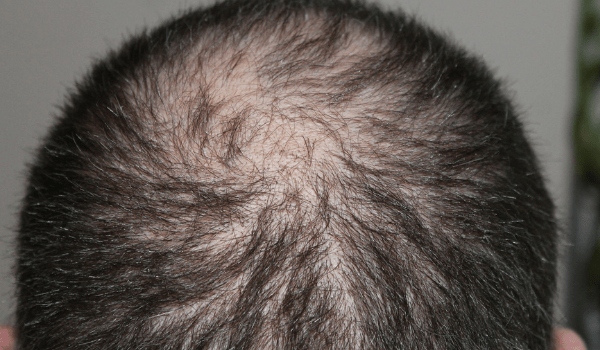What Is Alopecia?
Alopecia is an autoimmune disease that occurs when the body attacks its own hair follicles, resulting in partial or complete hair loss. There are three main types of alopecia, and a number of treatments available for each.
-
Alopecia areata
- This condition is characterized by losing hair in patches. It affects roughly 2% of the population and can start at any age and continue for any amount of time. Many people with alopecia areata eventually regain their hair.
-
Alopecia totalis
- This condition is the total loss of all hair on the scalp.
-
Alopecia universalis
- This condition can be recognized by loss of hair all over the body. However, only about 5% of people affected by alopecia lose all the hair on their scalp or body.
Is Alopecia Contagious?
It’s important to know that alopecia is not contagious and does not occur due to nerves. Alopecia is actually caused by the immune system attacking the hair follicles. Alopecia can, and frequently does afflict otherwise very healthy people.
Alopecia Symptoms
The most widely acknowledged symptom of alopecia is hair loss, but what other characteristics will help you identify it? Typically, hair loss will become apparent as you begin to notice clumps on your pillow, or a small patch of skin on your scalp where hair previously was. While most hair loss occurs on the scalp, some people also experience hair loss in the eyebrows, beard, and/or eyelashes. Patches can grow to be any size.
Although it is the most obvious, loss of hair is not the only symptom you should be aware of. Around the edges of bald spots, you might notice “exclamation mark hairs.” Exclamation mark hairs look like their name – the hair gets narrower the closer to your skin it gets. In some cases, you may lose all of your body hair.
Your nails can also be affected by alopecia. Alopecia can cause dents, white spots, or lines in the nail, and your nails may also become rough, lose their shine, or thin and split. These symptoms of the nails are often an early sign of alopecia.
While there is no cure for alopecia, there are several alopecia treatment options that dermatologists recommend. Most alopecia treatment options help to regrow your hair quickly. However, before beginning any treatment, your dermatologist must confirm the alopecia diagnosis.
Alopecia Treatment Options
Once the diagnosis has been confirmed, your dermatologist may recommend one of these four common alopecia treatment options:
-
Corticosteroids
Corticosteroids suppress the immune system, working to slow the immune system from attacking the hair follicles. Corticosteroids can be administered to patients in three different forms.
The most common form of corticosteroids are injections into the places of hair loss. Shots are typically administered every three to six weeks, depending on the severity of the hair loss. Hair growth can be seen typically four weeks after the last shot.
Corticosteroids can also be prescribed as a topical ointment such as a cream or lotion. While topical creams are less effective, they are the preferred alopecia treatment method for children.
Lastly, corticosteroids can be prescribed as pills, though this is the least common form prescribed. Pills can have serious effects, so they are not a common form of alopecia treatment unless there is extensive hair loss.
-
Minoxidil
An alopecia treatment method that is safe for both children and adults, minoxidil is a topical hair regrowth medicine that is applied twice daily. New hair growth is noticeable after about three months. This medicine is typically combined with another form of alopecia treatment.
-
Anthralin
Anthralin is used to alter the skin’s immune function. This type of alopecia treatment is a tar-like substance that is applied to the skin and left on for 20 to 60 minutes. Anthralin is considered a short-term contact therapy and should not be left on longer than 60 minutes, or the skin can become irritated.
-
Diphencyprone (DPCP)
DPCP is a topical medicine applied to bald areas on the body. It causes a minor allergic reaction with symptoms of redness, itching, and swelling, which is intended to send white blood cells to the affected area to fight the inflammation. This can also help decrease the breakdown of hair follicles, lessening the amount of hair loss experienced. Hair growth typically occurs about three months after using DPCP as an alopecia treatment method.
Contact Your Dermatologist
If you feel you may be experiencing symptoms of alopecia and are looking to discuss alopecia treatment options with a board-certified Pittsburgh dermatologist, you can contact Vujevich Dermatology Associates to schedule an appointment at any of our locations.
Vujevich Dermatology Associates offers medical, surgical, and cosmetic dermatology from some of the most highly trained physicians and clinicians in the greater Pittsburgh area. You can reach our team at 412-429-2570 or visit our contact page to see all of our locations. You can also follow us on Facebook to see what’s new in the world of dermatology.

